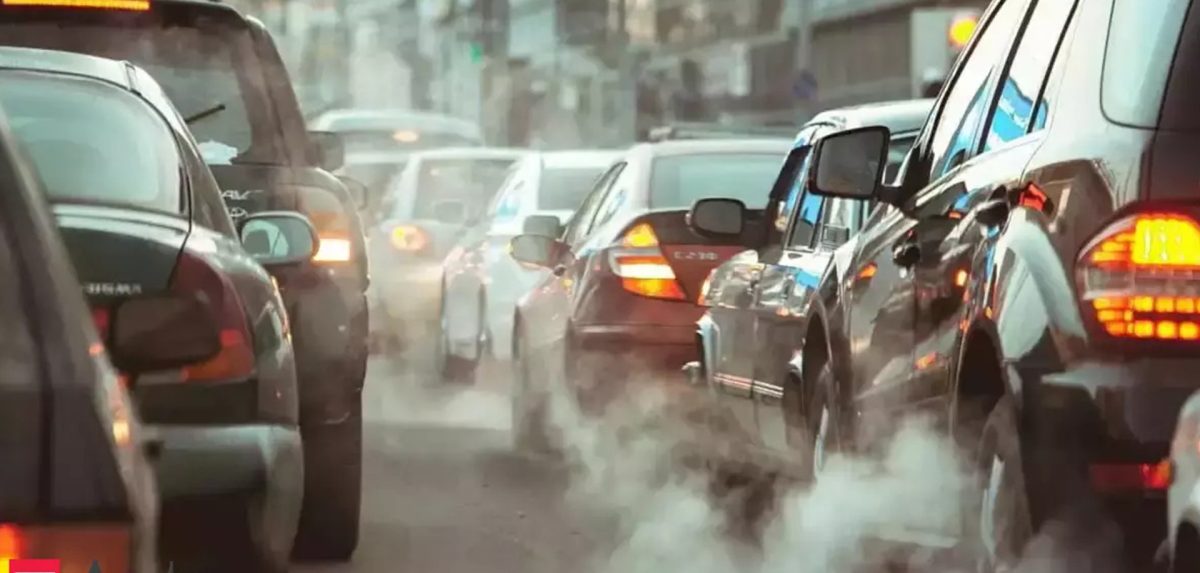The standard form of transportation across the United States is a gas powered vehicle for every individual of age. While this is for convenience sake, it’s not particularly a healthy choice for the environment. As gas vehicles have been used for the past hundreds of years, and have been increasing ever since, they have slowly been contributing to the climate crisis; thus, this has prompted the U.S.’s Environmental Protection Agency to step in and make a new policy to combat the issue.
As stated previously, gas powered vehicles, such as the average car, emit a variety of greenhouse gasses that are contributing to the current climate crisis, but many people fail to realize the true problem that resonates here. An average person emits around 4.6 metric tons of CO2 a year, according to the EPA, and this is just from driving. This statistic fails to include the usage of other fossil fuels through actions like heating and electricity. 4.6 metric tons per person adds up very quickly, especially in a country of over 330 million people. The problem that lies within these heavy CO2 emissions, along with other greenhouse gasses, is their contribution to climate change. Greenhouse gasses such as CO2, methane, water vapor, and nitrous oxide are all emitted through the burning of fossil fuels and quickly enter the atmosphere. From here, the gasses build up a cloud-like blanket that covers the atmosphere. While referred to as a ‘blanket’, it does not serve the same comfort purpose that a blanket typically does during a nice after school nap, in fact, these gasses trap the heat produced by the sun, consequently heating the earth. This greenhouse effect ultimately leads to what is referred to as climate change because of the gradual increase in heat severely altering the initial climate.
“Plants and animals have a limited range of tolerance in which they can survive. As the climate warms, where these plants and animals can survive also changes. As the polar ice caps melt, more freshwater is being released into our oceans changing the salinity of the oceans which changes what organisms are able to survive. We also have sea level rise which can impact shoreline environments,” said Mrs. Wagar, AP Environmental Science teacher.
To combat these negative environmental effects, the EPA and other administrations have come up with a variety of laws and policies to limit such emissions. While these additions have been semi-productive, none have really taken a strong approach to fixing the issue at hand. Under recent legislation, the EPA has passed a new law, aligned with the interests of the Biden Administration, to limit tailpipe emissions which are essentially the fumes that are released from driving a vehicle. Under the new law, pollution standards for passenger cars, light-duty trucks, and medium-duty vehicles for model years 2027 through 2032 and beyond will be redefined to crack down on the emissions. Through this law, auto manufacturers will be expected to create vehicles that emit an average of 85 grams of CO2 per mile, which is a sharp contrast to the average of 444 grams currently. While this seems like a stark, rapid change, not all manufactured products will be affected as gas powered vehicle production will continue, but at a much lower rate.
The benefits of this new legislation are very promising in counteracting the current climate predicament in the United States for a variety of reasons. First and foremost, the average CO2 emissions from vehicles will decrease by seven million tons, which is an astronomical decrease that will be followed with a necessary environmental relief.
“Electric vehicles indirectly get their energy, or charge, from natural gas or coal fired power plants. Natural gas is more energy efficient or energy dense, thus putting less carbon dioxide into the atmosphere when burned as opposed to petroleum based products,” said Wagar.
Along with the emission decrease comes several health benefits. Hospitalization from pollution isn’t super common, but in the U.S. alone, 60,200 deaths still occurred in 2019 due to air pollution. With a lesser amount of emissions produced with the EPA’s action, these hospitalizations will decrease and along with the medical expenses, $13 billion will be saved. Another generally unthought of benefit of this new law is the savings on fuel. Most Americans see this policy and immediately oppose it for the expansion of electric vehicle sales they expect to follow. While this will occur in some shape or form, the electric vehicles will prove their efficiency through their limited charging expenses. Electric vehicles are in fact cheaper to fuel a car with, in contrast to gasoline, and the overall savings between fuel and repairs will save approximately $62 billion nationwide.
While these benefits look both effective and environmentally productive, there is still a strong opposition force. This comes from both automobile workers and electric vehicle manufacturers as they have different perspectives on the timeline and harshness of the law. The Alliance for Automotive Innovation and United Auto Workers appealed to the EPA to dial down the restrictions initially and then gradually change them over time to match the eventual emission number they want. The electric vehicle companies provide the complete opposite sentiment as they hope to increase the restrictions already to protect their industry and even increase their sales. Other opposition is presented through the current state of the U.S. as they don’t appear ready for the bug transition. Currently, electric charging stations are severely limited and failing to expand. With the sudden increase in electric vehicles over the coming years, the U.S. will have to work quickly to combat this increase with more charging stations across the country.
Even though this new EPA policy won’t reverse all past environmental damage in the United States, it is making an effort to limit emissions in the future as electric cars will slowly start to become the average citizen’s vehicle and the new standard. While this is a huge transition for many Americans to live through, the long term effects will be increasingly beneficial for the nation and the generations to come will get to see a world with limited greenhouse emissions and progress toward reversing the detrimental climate change.


















